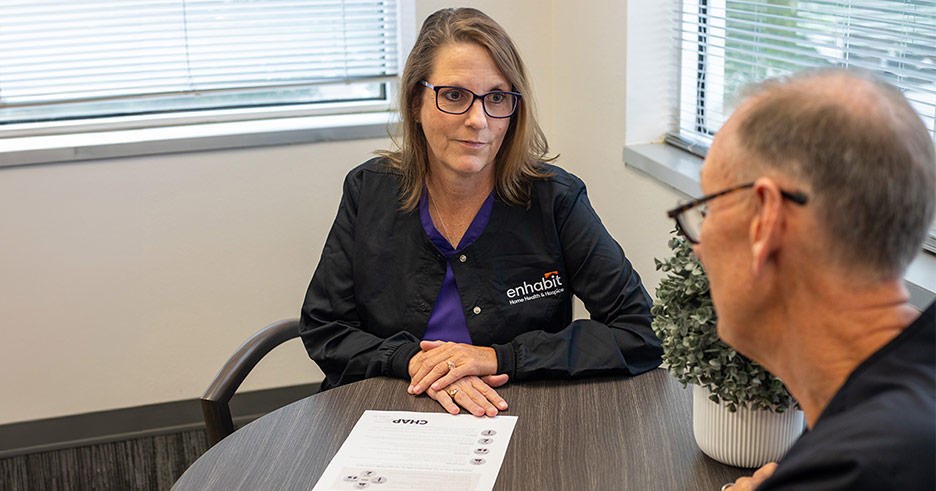When you think of a hospice care team, there is one member who may not initially come to mind – the pharmacist. Pharmacists have recently become widely recognized as an important part of a patient’s end-of-life care team, and for good reason.
Pharmacists play a critical role in hospice care by addressing complex symptoms. They also monitor for possible drug interactions and avoid over-utilization of medications. Through collaboration with hospice clinicians, pharmacists can help ensure each patient receives a quality end-of-life experience.

Where does a pharmacist come in on a patient’s hospice journey?
As part of the hospice benefit, hospice agencies are responsible for providing all medications related to a patient’s terminal illness or any related conditions. This includes medications that give patients comfort and palliative care, or that contribute to the decline of the terminal prognosis.
“In most health care settings, the goal is to treat the patient and make them better,” said Dang. “The medications prescribed reflect that. But in hospice, our goal is to ensure patients are on medications that give them a higher quality of life. We want to help them live symptom free for as long as possible.”
Dang works closely with the hospice clinical team to evaluate medication utilization and avoid duplicate medication therapy. This is common among many hospice patients. Estimates show that hospice patients are prescribed an average of 15 medications.
Collaborative care
As a result, Dang works with hospice clinicians and the physician team to determine which medications are medically necessary at the end of life. Together, they find the most effective options for the patient.
“This is often a result of patients going in and out of various care settings and being treated by multiple physicians,” said Dang. “It’s common for our hospice team to identify that a patient is taking multiple prescriptions that are targeting the same problem.”
Enhabit also utilizes an electronic service that allows clinicians to send medication orders through their mobile devices. These devices also document patient care in real time.
This allows clinicians to spend less time on hold with the pharmacy. Then, they have more time to focus on providing quality patient care and family support.
“I enjoy helping our clinicians, whether it’s answering questions about a certain medication or even talking through what next steps should be for a specific patient,” said Dang. “By serving as a pharmacy resource to our branches, I’m able to help them focus on their role as a caregiver.”
Endless opportunities as a pharmacist
“After 14 years in hospice, I wish I would have realized how many opportunities there are as a pharmacist,” said Dang. “It’s great to see pharmacists becoming more widely recognized as part of a patient’s care team, because we are trained to be clinical. We have clinical expertise that can have a significant impact on the patients we serve.”
Social Share
At Enhabit our patients are our number one priority. From providing the latest medical practices to building deep personal connections, we’re focused on upholding every patient’s dignity, humanity and sense of control on their healthcare journey.
Home health
Our home health services give patients access to the care they deserve in the comfort of their own homes. From disease and injury management to recovery from surgery, our clinicians help patients confidently achieve their healthcare goals.
Hospice care
Our hospice care services place importance on the comfort of every patient living with a terminal illness. Our caring professionals are dedicated to providing not just physical care, but spiritual and emotional support to every patient and their loved ones.

 Back to Resource library
Back to Resource library




